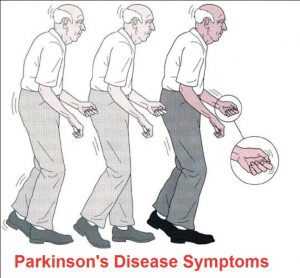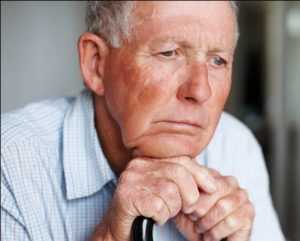Parkinson’s disease (named after the scientist who discovered it) affects the body’s ability to control movement. It is caused by loss of brain cells in the specific part of the brain which produces the chemical messenger dopamine. Because of this damage, less dopamine is produced and transported to the area of the brain that co-ordinates movement. Dopamine helps in attaining coordinated muscle movements by transmitting messages to the parts of the brain that control these movements.
The reason behind the cause of Parkinson’s disease is still unknown. The symptoms of the disease develop when about 80% of dopamine has been lost. This disease is both chronic, meaning it persists over a long period of time, and progressive, meaning its symptoms become worse over time. The severity of disability varies from person to person. Some people become severely disabled while others experience only minor movement disorders. For the treatment of Parkinson’s disease, you can find the best neuro-physician in Lahore and other main cities of Pakistan through Marham.
Causes
Till now, it is not clear why dopamine-producing cells deteriorate in the brain. Genetic and pathological studies show that various dysfunctional cellular processes, inflammation and stress can all contribute to brain cell death. In addition to this, some abnormal clumps containing a specific type of protein are also present in PD patient’s brain cells. The presence and function of these clumps are still not understood. Scientists believed that a decrease in dopamine level (cell damage) is due to a combination of genetic and environmental factors.
Symptoms


The four primary symptoms of Parkinson’s disease (PD) are tremor or trembling in hands, arms, legs, jaw, and face; rigidity, or stiffness of the limbs and trunk; bradykinesia, or slowness of movement; and postural instability, or impaired balance and coordination.
- Tremors often occur when the individual is resting, but not while he is doing any task. Tremors may worsen when a patient is tired, stressed or excited.
- Rigidity may produce pain and muscle aches. Loss of smooth hand movement may make basic tasks difficult like difficulty in eating and cramped handwriting.
- In bradykinesia, it may become difficult to start a movement and complete the movement. This together with stiffness can affect the facial muscles and result in an expressionless, mask-like face.
- Postural instability can make it difficult to adjust the posture and to maintain balance. And it may lead to falls.
The other regions of the brain also become affected and damage to brain cells is not only limited to those cells that produce dopamine. Symptoms of depression, anxiety, cognitive impairment, constipation and fatigue result from the cell death of the other brain parts.
Treatment
At present Parkinson’s disease has no cure. The medications used in its treatment are basically managing the symptoms of the disease. According to National Institute of Neurological Disorders and Stroke, current advances in Parkinson’s research have raised the hopes of being able to decrease the progression of the disease, restore lost function and even prevent it entirely.
Read Also: 5 Ways To Avoid Walking Disaster aka Osteoporosis
In the next decade, there will be significant breakthroughs in the treatment of Parkinson’s disease.
Many drugs are approved recently by the FDA for the treatment of PD symptoms. Similarly, surgical procedures can also be done when the disease does not respond to medicines.
Patients sometimes face a pattern of good function or movement when their medication is doing well, alternating with the bad function when their medicines are not working well.
How is Parkinson’s Disease Diagnosed?
For a good treatment of this disease, early and accurate diagnosis is very important so that a good quality of life can be given to the patient as long as possible. However, till now there is no test to diagnose Parkinson’s disease (except after the individual has expired). The diagnosis of this disease is difficult in the early stages as the symptoms resemble other diseases. So it is important to rule out the accurate symptoms and the disease by regular checkups.
The early diagnosing procedures include a medical history and family history of the patient (if someone in the family has this disease), which medicines are taken by the patient, whether there was any exposure to toxins or any repeated head injuries in the past. A neurological examine includes evaluation of movement, coordination, walking and motor tasks involving hands.
Many tests are used to measure mental capacity, behavior, mood, daily living activities, and motor functions. They are very helpful in diagnosing and monitoring the progression of the disease.
The diagnosis of PD is more likely if;
- At least 2 or 3 symptoms of PD is present
- The onset of symptoms started on one side of the body only.
- Symptoms are not due to secondary causes like medicines and other diseases like strokes in the area controlling movement
- Symptoms get better the use of levodopa
Here are some major facts about Parkinson’s disease which gives you awareness about it.
Early Diagnosis is Helpful in Better Treatment
Today scientists are researching for the early detection of the symptoms before such characteristic movement symptoms, like tremors, are produced. Dopamine level starts decreasing 6 to 10 years before any neurological symptoms appear. According to researchers, there are some very early signs of Parkinson’s disease that may appear before significant motor deterioration start that include the following:
- Loss of sense of smell, this begins about 4 to 6 years before movement disturbance.
- Chronic constipation, which can begin up to 12 years before motor dysfunction.
- Physically acting out dreams at night, a sleep disorder can begin up to decades before any motor symptoms.
It is not necessary that these symptoms always signify Parkinson’s disease, but people should consult a physician when facing any abnormal changes. With the help of this type of studies, scientists are trying to develop new treatments that target the specific brain parts that could slow or even halt the progression of the disease.
Age and Genetics Have Link With Parkinson’s Disease
Parkinson’s disease is the disease of late middle age like individuals of 50 to 60 years or above age may have more chances of getting this disease. The chances of the onset of this disease below 50 years are 5 to 10%.
Similarly according to the research family history also have a link with this disease. So it may be the genes that are the cause of this disease and they run in the family.
Freezing in Parkinson’s Disease
Freezing is a temporary involuntary inability to move in Parkinson’s disease patients. This is a problematic issue because the risk of falling is increased. The patient may not be able to cross the threshold of a door, get into an elevator, or even get out of a chair.
This situation can be controlled by some techniques like shifting weight or imagining a line to cross can help the patient. A Physical therapist can help the patients to learn techniques to control these episodes. The freezing occurs when a patient is close to the end of their dopaminergic medication dose, so dose adjustments can be helpful in decreasing the chances of freezing.
Depression – the Major Problem in Parkinson’s Disease Patients


Because of the disturbance in the normal movement of body parts usually patient of Parkinson’s disease, depression frequently occurs in them. Another reason is damaging of brain cells causes depression and anxiety. Most of the antidepressant medicines worsen the symptoms of Parkinson’s disease like tremor or rigidity.
Now research has found that some antidepressants are helpful in treating depression in PD patients without elevating the symptoms of PD itself.
Surgical Interventions for Parkinson’s Disease Patients
Deep Brain Stimulation (DBS) is a surgical treatment in which a neurotransmitter delivers tiny electrical signals to areas of the brain that control movement. This technique has no dopamine and it does not trigger to release dopamine. But the stimulation is constant so it reproduces the effect of having constant dopamine.
This technique is a rare substitute for medication but it is a good option for otherwise healthy people who have periods where their medicines are not working.
Celebrities Who Suffer From Parkinson’s Disease


From actor Michael J. Fox to the late world-renowned boxer Muhammad Ali to former NBA player Brian Grant, celebrities have given Parkinson’s disease a recognizable face. These celebrities not only fight with their disease but also contribute in the research for PD treatment. Michael J. Fox made an organization naming Michael J. Fox Foundation for Parkinson’s research. Today the foundation and Fox are actively seeking a cure to the disease.
Exercise is One of the Cures


With the use of medication of PD, it is very important to do physical exercise to get better results. Doctors advised keeping moving for a better movement when you get movement disorders (Parkinson’s disease). Patients should talk to their doctors before starting any type of exercise. Walking, yoga, biking, dance, resistance training, and swimming have been reported as useful exercises that many PD patients can easily do and enjoy. Experts also suggest treadmills or walking around the house if a patient has a risk of falling in outdoor activities.
This is a small review of this chronic slowly progressing disease. That needs an early diagnosis to make the quality of life of the patient better. Whenever you feel any change in your body’s motor ability, you should immediately consult your physician. The chances of this disease are much higher in elderly patients so people above 60 years of age should get regular checkups.

